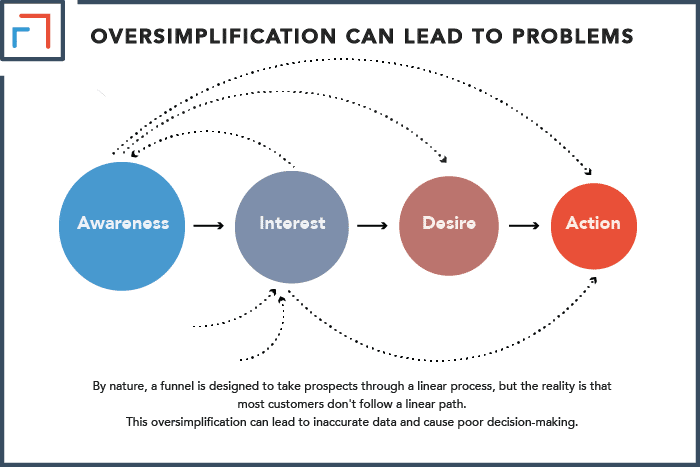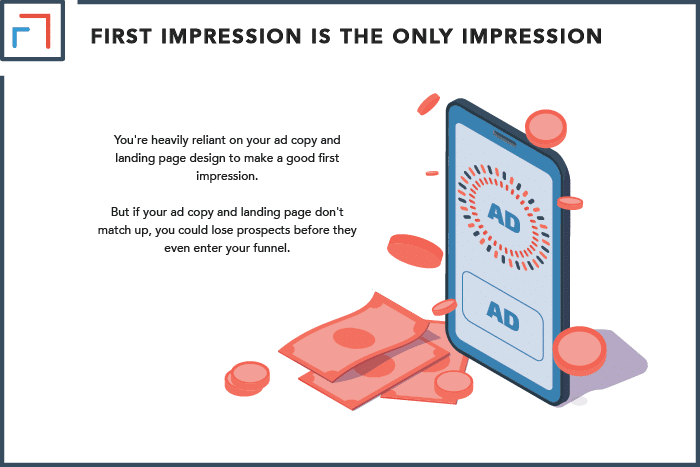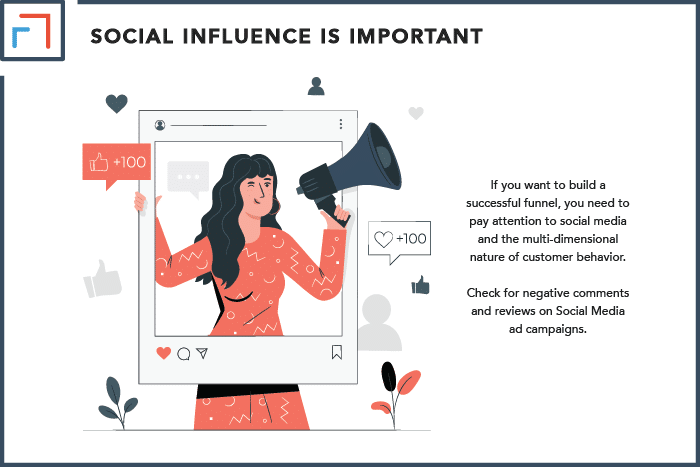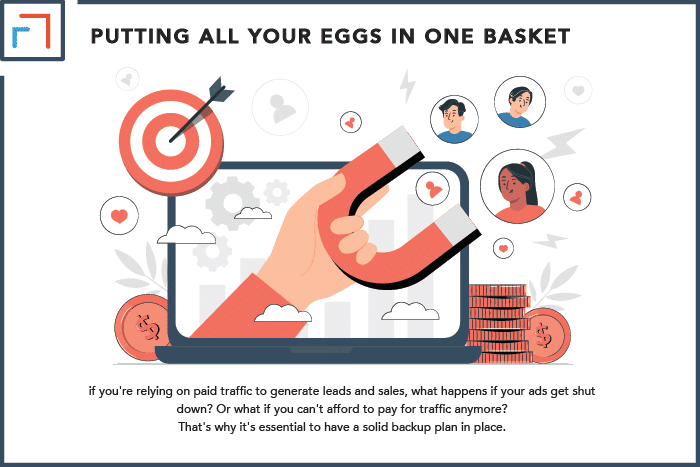There are a lot of positive things about marketing funnels. They’re one of the most efficient ways to move prospects through a marketing process, and they can generate some serious profits. But even with all their benefits, funnels do have a few disadvantages.
The major problem with funnels is that they oversimplify the buyer’s journey. Other major drawbacks include overlooking the multi-dimensional nature of social influence and failing to consider all the other marketing channels that prospects may interact with along the way.
Today, we’ll explore some of the disadvantages of using funnels and how you can overcome them. Read on if you want to know what you’re getting yourself into before you start incorporating funnels into your marketing efforts!
Where Does the Funnel Go Wrong?
There are multiple places where marketing funnels can go wrong. Let’s take a look at some of the most common funnel disadvantages.
Of course, not every funnel will experience these issues, but it’s important to be aware of all the weaknesses before you move forward.
1. Oversimplification Can Lead to Problems
A significant disadvantage of using a funnel is that it often oversimplifies the customer journey.
By nature, a funnel is designed to take prospects through a linear process, but the reality is that most customers don’t follow a linear path.
They might enter your funnel at different points, or they might take different paths through your funnel.
This oversimplification can lead to inaccurate data and cause poor decision-making.
For example, let’s say you have a sales funnel with three steps: Awareness, interest, and purchase.You might look at your data and see that most prospects enter your funnel at the interest stage.
Based on this data, you might conclude that your awareness campaigns aren’t working.
But this data is inaccurate because it doesn’t take into account the different paths that prospects can take through your funnel.
In reality, some prospects might enter your funnel at the awareness stage and then move directly to the purchase stage.
Others might enter your funnel at the interest stage and then move back to the awareness stage.
To avoid this problem, you need to track not only where prospects enter your funnel but also where they exit.
This will give you a more accurate picture of what’s happening in your funnel and how different campaigns are performing.

2. Strengths Can Become Weaknesses
The biggest advantage of using a funnel is also its biggest disadvantage: it can be very rigid.
Once you’ve set up your funnel, it can be difficult to change things around if you need to.
This rigidity can lead to problems if your funnel isn’t performing the way you want it to.
For example, let’s say you have a sales funnel that’s not converting as many prospects into customers as you’d like.
In this case, you might need to make some changes to your funnel. However, if it’s too rigid, you might not be able to do so.
This can lead to lost sales and frustrated customers. To overcome this disadvantage, you need to be flexible with your funnel.
Don’t be afraid to experiment with different steps, layouts, and even whole sections of your funnel. And if something isn’t working, don’t hesitate to change it.
The goal is to find the best strategy for your business, not to stick with a single funnel forever.
When it comes to this, it’s best to use sales funnel software like ClickFunnels because this program makes it easy to create, change, and track your sales funnels.
3. Ignorance is Bliss, But It Won’t Help Your Business
A critical disadvantage of using a funnel is that it can lead to ignorance.
It’s easy to forget about the bigger picture when you’re focused on generating leads and making sales.
If you want to build a successful business, you need to understand the customer journey from start to finish.
You need to know what happens before a prospect enters your funnel, as well as what happens after they make a purchase.
This type of understanding can only be gained through research. And while it’s important to do your own research, you also need to talk to your customers.
Ask them about their needs and pain points. Find out what led them to your business in the first place.
This type of customer feedback is essential for improving your funnel. Without it, you’re just guessing at what’s going on in your customers’ minds.
And as we all know, guesswork is not a good foundation for business decisions.
4. The First Impression is Often the Only Impression
When you’re running a funnel, you’re focused on getting people to take action.
This means that you’re heavily reliant on your ad copy and landing page design to make a good first impression.
But if your ad copy and landing page don’t match up, you could lose prospects before they even enter your funnel.
This is a common problem with funnels that are designed to generate leads.
The lead generation process often relies on a single piece of content, such as an ebook or white paper.
But if this content doesn’t match the rest of the funnel, you could end up with a high bounce rate and few leads.
To avoid this problem, make sure that all the content in your funnel is closely related.
If you’re offering an ebook as a lead magnet, ensure that your ad copy and landing page are both about the ebook.
And if you’re selling a product, make sure that your sales page is consistent with the rest of your funnel.

5. It’s All About the Bottom Line
As a business owner, you’re always focused on the bottom line.
And while this is a necessary part of running a business, it can also be a major disadvantage of using a funnel.
The bottom-line focus of a funnel can lead to short-sighted decision-making.
For example, let’s say you’re running a lead generation campaign and you’re not getting the results you want.
In a moment of desperation, you might decide to lower your price or offer a discount.
While this might generate some additional leads, it’s not a sustainable solution. In the long run, you’ll end up losing money on each lead that you generate.
And if you keep lowering your prices, you’ll eventually reach a point where you’re not making any money at all.
It’s also important to remember that not every prospect is a good fit for your business.
But when you’re focused on the bottom line, it can be tempting to try to sell to everyone who enters your funnel.
Unfortunately, this can lead to wasted time and resources, as well as frustrated customers.
To avoid this problem, you need to be clear about who your target customer is and what they’re looking for.
Then, you can create a funnel that’s designed to attract only those prospects who are most likely to buy from you.
6. Marketing The Product vs. Selling The Product
Another drawback of using funnels is that they can lead to a focus on marketing the product instead of selling the product.
This can happen when you put too much emphasis on getting people to buy your product without first ensuring that they actually want it.
For example, let’s say you have a new product that you’re selling through a funnel.
You might be so focused on getting people to buy your product that you don’t take the time to explain what it is and why they need it.
As a result, you might end up with customers who are disappointed with your product because they didn’t know what they were buying.
Marketing isn’t about pushing a product on people; it’s about finding the right people and then telling them about your product.
If you try to sell to everyone, you’ll sell to no one.
So make sure you’re targeting the right people with your funnel and providing value before you ask for anything in return.
You can do this by segmenting your audience and then creating custom funnels for each segment.
This way, you can ensure that each funnel is designed to meet the specific needs of your target audience.
7. Social Influence Is Important
Another disadvantage of using a funnel is that you may underestimate the importance of social influence.
When you’re focused on generating leads and making sales, it’s easy to forget about the role that social media plays in the customer journey.
But if you want to build a successful funnel, you need to pay attention to social media and the multi-dimensional nature of customer behavior.
For example, let’s say you’re running a Facebook ad campaign to generate leads for your funnel.
However, you’re not monitoring the comments and reviews that people leave on your Facebook page.
If those comments and reviews are negative, they could offset any positive effects that your ads might have had.
And if people are talking about your brand negatively on social media, it could make it harder for you to generate leads and sales.
What’s important to understand here is that people don’t make purchasing decisions in a vacuum.
They’re influenced by their friends, family, and peers. And if you’re not paying attention to social media, you could be missing out on a lot of potential customers.

8. The Devil Is in the Details
It’s easy to get lost in the details when you’re dealing with funnels.
There are so many points you can tweak and adjust, but you need to think about how these changes impact your funnel as a whole.
This can lead to problems such as:
- Focusing too much on one step of the funnel while ignoring the others. For example, you might spend all your time and resources on generating traffic but neglect to create compelling offers or follow up with prospects after they enter your funnel.
- Failing to track the right metrics. It’s important to track not only the number of leads and sales but also the quality of those leads and sales. Otherwise, you could end up with a lot of low-quality leads that never convert into customers.
- Not testing and optimizing your funnel. A funnel is not a set-it-and-forget-it solution. Instead, you need to continually test and optimize your funnel to ensure that it’s performing as well as possible.
The takeaway here is that you need to be careful not to get too bogged down in the details. Yes, the details are important.
But if you lose sight of the big picture, you could make some critical mistakes.
9. It’s Not as Easy as It Looks
On the surface, using a funnel appears to be relatively simple. You just need to generate traffic and then convert that traffic into leads and sales.
But in reality, it’s not that easy.
Unless you already have a well-established website with a lot of traffic, you’re going to have a tough time generating the number of leads and sales that you need to make your funnel work.
And even if you do have a well-established website, there’s no guarantee that your funnel will be successful.
There are a lot of moving parts involved in a funnel, which means there are a lot of things that can go wrong.
Don’t forget that a funnel can certainly be a powerful tool for your business.
But it’s important to understand what it takes to make a funnel work before you dive in headfirst.
If you’re not careful, your funnel could end up being a big waste of time and money.
10. Putting All Your Eggs in One Basket
Finally, when you use a funnel, you’re essentially putting all your eggs in one basket.
You’re relying on a handful of strategies to generate leads and sales, which can be risky.
For example, if you’re relying on paid traffic to generate leads and sales, what happens if your ads get shut down?
Or what if you can’t afford to pay for traffic anymore? If you’re relying on organic traffic, what happens if Google decides to make an algorithm change that hurts your rankings?
These are just a few of the things that can go wrong when you put all your eggs in one basket.
And when things go wrong with your funnel, it can be very difficult to recover.
That’s why it’s essential to have a solid backup plan in place.
You need to have other ways of generating leads and sales so that you’re not entirely reliant on your funnel.
Otherwise, you could find yourself in a very difficult situation if something goes wrong.

Final Thoughts
Using a funnel can be a great way to generate leads and sales. But there are also some disadvantages that you need to be aware of.
Funnels have proven to be effective when they are used properly, but they sometimes fail to account for the complexities of the customer journey.
Remember to continually adjust your funnel and watch the metrics to spot the weak areas.
Although it’s tempting to put profits first, your focus should be on the customer’s journey rather than your own sales goals.
If you take care of the customer, they will return the favor.
